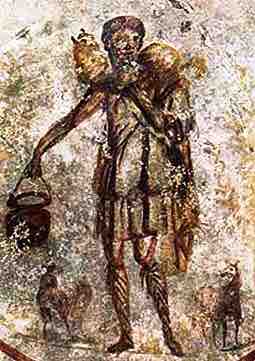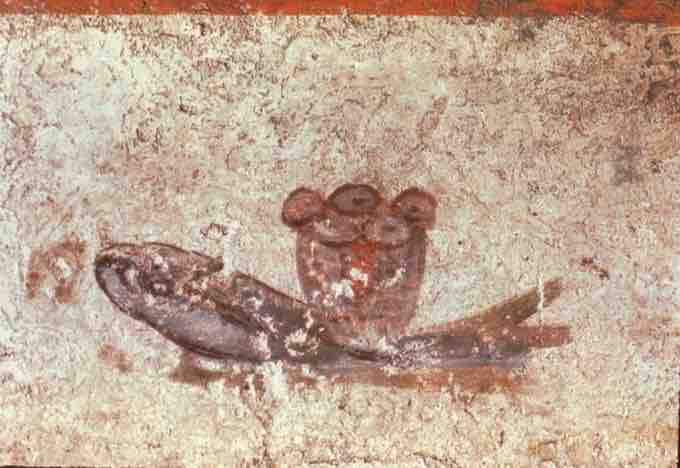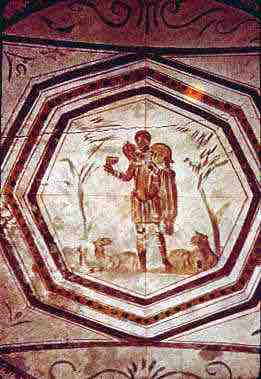The Start of a Religious Tradition
Early Christian art is the art produced by Christians or under Christian patronage from about the year 100 CE to about the year 500 CE. Prior to 100, there is no surviving art that can be called Christian with absolute certainty. After about 500, Christian art shows the beginnings of Byzantine artistic style; prior to 100, Christians may have been constrained from producing durable works of art by their position as a persecuted group. Surviving paintings that feature early Christian art are most often found in Roman catacombs.
Early Christians used the same artistic media as the surrounding pagan culture, which included fresco, mosaics, sculpture, and manuscript illumination. Furthermore, early Christians used Roman forms and styles. Late classical style included a proportional portrayal of the human body and impressionistic presentation of space; this style is seen in early Christian frescos, such as those in the catacombs of Rome. Early Christians also adapted Roman motifs and gave new meanings to what had been pagan symbols. Among the motifs adopted were the peacock, grapevines, and the "good shepherd" . Early Christians also developed their own iconography; symbols such as the fish (ikhthus) were not borrowed from pagan iconography . The result, was a fusion of pagan motifs and Christian symbolism that infused early Christian painting and iconography.
Christian Art, Hidden and Disguised
During the persecution of Christians under the Roman Empire, Christian art was necessarily and deliberately furtive and ambiguous, using imagery that was shared with pagan culture but had a special meaning for Christians. The earliest surviving Christian art comes from the late second to early fourth centuries on the walls of Christian tombs in the catacombs of Rome. From literary evidence, there may well have been panel icons which, like almost all classical painting, have disappeared. Initially Jesus was represented indirectly by pictogram symbols such as the Ichthys, the peacock, the Lamb of God, or an anchor. Later, personified symbols were used, including Jonah, whose three days in the belly of the whale pre-figured the interval between the death and resurrection of Jesus, Daniel in the lion's den, or Orpheus charming the animals. The image of "The Good Shepherd," a beardless youth in pastoral scenes collecting sheep, was the commonest of these images, and was probably not understood as a portrait of the historical Jesus . These images bear some resemblance to depictions of kouros figures in Greco-Roman art.
The almost total absence from Christian paintings during the persecution period of the cross, except in the disguised form of the anchor, is notable. The cross, symbolizing Jesus' crucifixion, was not represented explicitly for several centuries, possibly because crucifixion was a punishment meted out to common criminals, but also because literary sources noted that it was a symbol recognised as specifically Christian, as the sign of the cross was made by Christians from very early on.

The Good Shepherd
Good Shepherd fresco from the Catacombs of San Callisto.

Fish and Loaves Fresco
This fish and loaves fresco, iconography particular to Christians and representative of the Eucharist, is found in the Catacombs of San Callisto.

The Good Shepherd
The Good Shepherd motif in painting is a fusion of pagan and Christian symbolism.